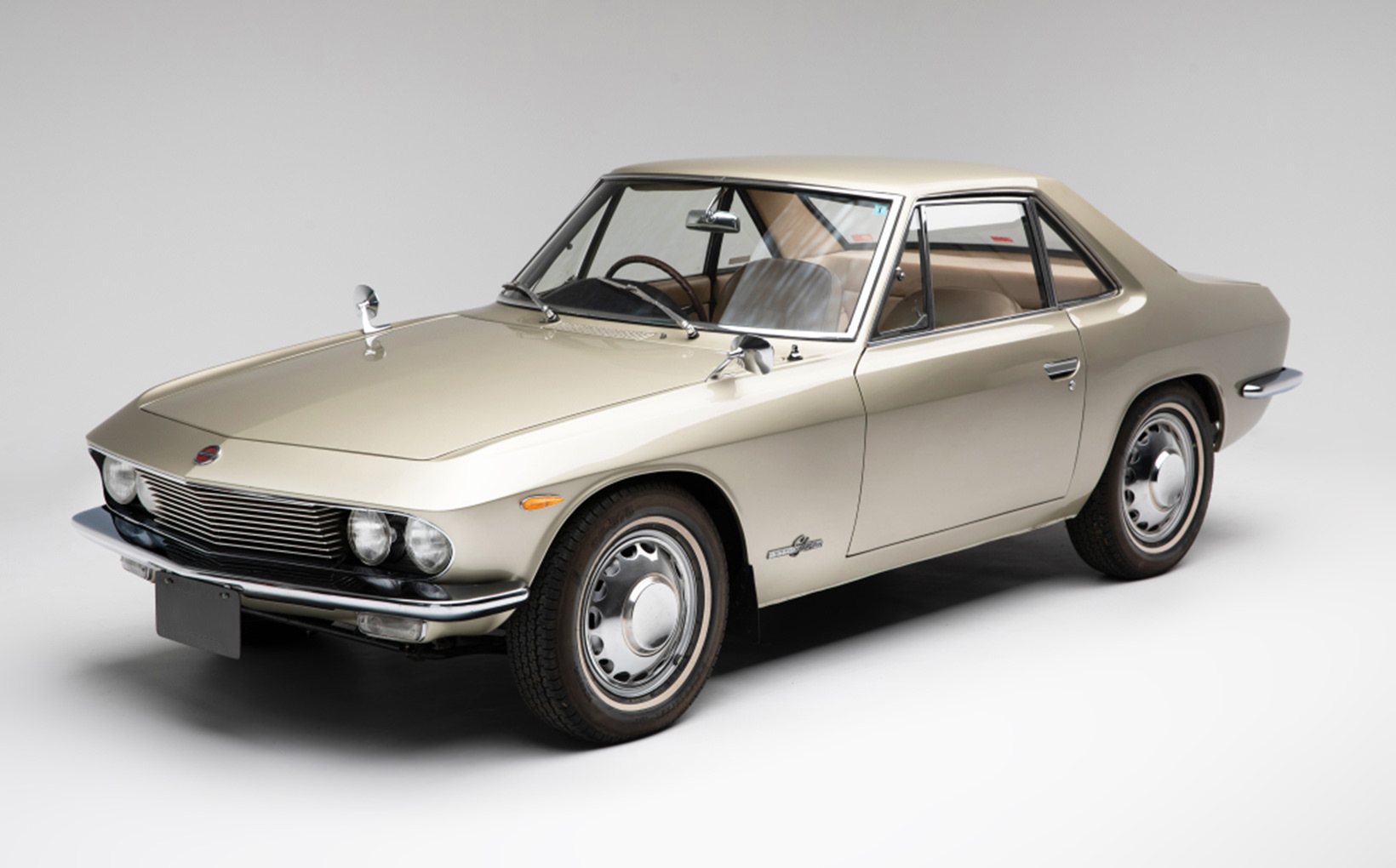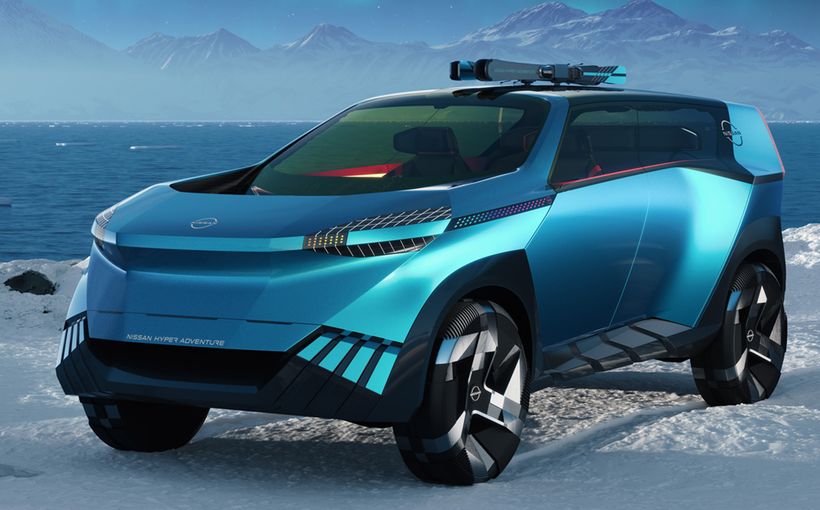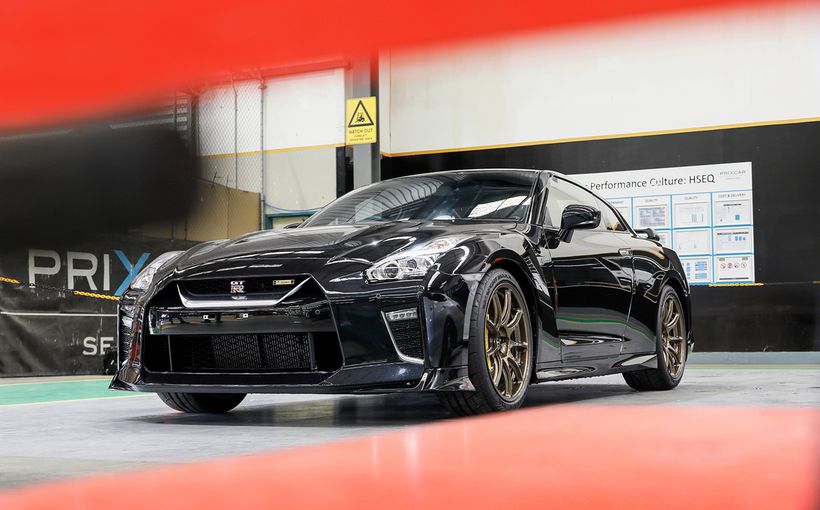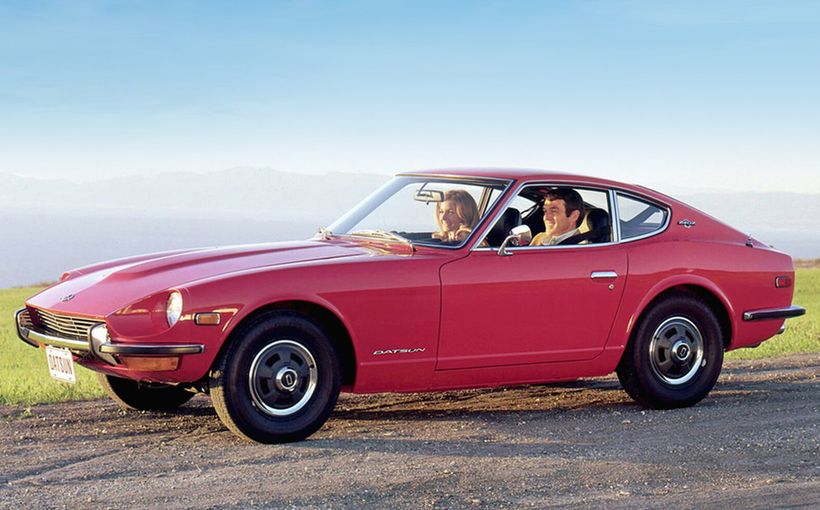Nissan Silvia: sporty coupe with competitive instinct

The Nissan GT-R is arguably Japan’s greatest high-performance GT. It has a fanatical following particularly since the pivotal R32, built on turbocharged six-cylinder engines, all-wheel drive and competition success. However, the predominantly four-cylinder rear-wheel drive Silvia is also revered by a vast global tribe that embrace it as a more affordable and accessible alternative, more than two decades after it ceased production.
What started out as a slightly quirky Japanese exotic in the mid-1960s evolved into an affordable performance coupe for the masses before its demise early in the new millennium.
During that time it showcased its enviable versatility in competition across circuit racing, rallying and drag racing disciplines. Since then, it has also thrived in world-title drifting and ‘time attack’ lap dashes and, not surprisingly, remains one of the most sought-after grey exports from Japan.
The Silvia’s enduring competitive edge reflects the excellence of its design and engineering, having been blessed with turbocharged four-cylinder power from Nissan’s CA, FJ and SR engine families which have become just as revered among enthusiasts and aftermarket tuners as the car itself.
And it’s that thriving aftermarket, particularly in Japan, which plays a pivotal role in the Silvia’s endless appeal, given an enormous choice of over-the-counter engine and suspension components to endlessly enhance its performance.

Image: https://en.wheelsage.org/
Silvia CSP311 (1965-1968)
In the early 1960s former BMW and Porsche design consultant Albrecht Goertz ventured to Japan, as he saw potential in the nation’s burgeoning post-war automotive industry.
Following the success of its Fairlady roadster, Nissan wanted to build a luxurious sports coupe with global appeal. It valued European influence in the styling process, so Goertz went to work with a team of in-house designers.
The first product of this collaboration was a petite two-door coupe built on the robust chassis frame and mechanicals of the (SP311) Fairlady 1600 roadster, hence its model code CSP311.
It was also the first Nissan to carry the Silvia name, derived from the nymph Sylvia in Roman mythology. In Latin it also means woods or forests. Go figure.

Image: https://en.wheelsage.org/
The compact CSP311 was only about 4.0 metres long and 1.5 metres wide with a kerb weight under 1000kg. Its classic long-bonnet-short-boot proportions exuded Goertz’s European flair.
With a top speed of 103mph (165km/h) and front disc brakes (rare at the time) it was the fastest production car in Japan, which prompted the Tokyo police to order a pair for speed limit enforcement. As a result, the Silvia’s high-performance reputation was established.
Even so, it attracted sales of only 550 units, primarily because each body was largely hand-built and therefore cost about double the price of the hot-selling Fairlady roadster on which it was based. Most Silvia CSP311s were sold in Japan but a few were exported to Australia and other markets.
During this time, Nissan took control of the Prince Motor Company in 1966; a move that was destined to have considerable positive influence on Nissan's performance car design and engineering.

Image: https://en.wheelsage.org/
Silvia S10/S11 (1975-1979)
The Silvia nameplate returned seven years later bearing the model code S10 and built on a dedicated S-chassis platform. It was larger in all key dimensions, with kerb weight nudging 1100kg. Australia was not one of its export markets.
Powered by the 1.8-litre L18 four shared with the 610, its new styling was criticised for a bulbous and heavy appearance. Handling was also inferior to its athletic 510 (Datsun 1600) sedan sibling, given that the S10 had a rudimentary live rear axle and leaf springs compared to the 510’s widely praised IRS.

Image: https://en.wheelsage.org/
Badged as the 200SX in the US, the S10 was not a strong seller in its largest export market. Federally-mandated 5mph (8 km/h) impact-absorbing bumper bars exaggerated the styling flaws and its 2.0-litre L20B four was choked by anti-smog equipment.
As a result, the S10’s reputation was already tarnished when Nissan released an upgrade in 1976, with a new trim level and EFI L18E engine which was enough to justify a new S11 model code. Another upgrade followed in 1977 before the S10 was replaced.


Image: https://en.wheelsage.org/
Silvia S110 (1979-1983)
The previous generation’s bloated appearance was replaced by the more squared-off and cleaner look of a new decade. The live rear axle featured a more sophisticated coil-spring/multi-link suspension architecture.
Available in a choice of hardtop coupe or new hatchback, the S110 Silvia was again larger in all key dimensions, with kerb weight exceeding 1100kg. Even so, the new styling proved popular.
Although sold as the Silvia (coupe) and Gazelle (hatchback) in many export markets (Australia again missed out), it retained 200SX in the US where it evolved through a variety of engines to the definitive 77kW (103bhp) 2.2-litre Z22E. It was also sold as the 180SX in Europe and even Sakura (Japanese for cherry blossom) in Mexico.

Image: https://en.wheelsage.org/
Only Japanese buyers were treated to the Silvia’s first turbocharged engine which delivered the performance it deserved, in the form of Nissan’s potent 99kW (133bhp) fuel injected SOHC Z18ET four.
In 1982 came a mid-life facelift and domestic Silvia buyers also had exclusive access to the DR30 Skyline’s DOHC 16-valve 110kW FJ20E engine with slight modifications and power reduction.


Image: https://en.wheelsage.org/
Silvia S12 (1983-1988)
The fourth generation or S12 brought another all-new design for coupe and hatchback, including the first Silvia to be equipped with pop-up headlights. The S12 continued the trend of being larger in most key areas except for width, with kerb weight climbing to 1170kg.
The new styling brought three of Nissan’s best turbocharged fours (depending on model) comprising the 99kW 1.8-litre SOHC 8-valve CA18ET and 124kW DOHC 16-valve intercooled CA18DET, plus the 136kW DOHC 16-valve 2.0-litre FJ20ET. There was also a new semi-trailing arm IRS.
S12 engine and trim choice again varied according to market location (which did not include Australia) and production year. Japan adhered to the familiar Silvia (coupe) and Gazelle (hatchback) nameplates while the US retained the 200SX badge, which in 1986 included a 200SX Sports Edition equipped with the Z31 300ZX’s lusty non-turbo 3.0-litre VG30E V6. This was the only time a Silvia had more than four cylinders.


Image: https://en.wheelsage.org/
Other model names included 190SX in Argentina and 180SX in Sweden. There were also numerous special editions released, along with a Mark II version released in 1986 with minor cosmetic revisions.
The S12 and Toyota’s rival AE86 were launched in the same year and, although they looked very similar, the Toyota quickly attracted a cult following not shared with its Nissan rival. Even so, although the AE86 enjoys icon status today, the S12 is increasingly popular among Silvia enthusiasts and widely considered the pick of the pre-S13 era.

Image: https://en.wheelsage.org/
Silvia S13 (1988-1994)
There were big changes for the fifth generation Silvia, which proved to be popular in its home market as evidenced by claiming the 1988 Car of the Year Japan award.
Both coupe and hatchback body styles were included in the all-new styling. However, only the Silvia coupe was available in export markets as the hatchback (formerly known as Gazelle) was renamed 180SX and repositioned as a junior sibling to the 300ZX.
The 180SX was also given an R-chassis code to further distance it from the S-chassis on which it was based. It was also only available in Japan, but this derivative is an indelible part of the Silvia story given their design links. We will cover them separately here.
Like its ancestors, the S13 Silvia coupe was larger than the previous generation in most key dimensions except height, which dropped 40mm. Kerb weight also exceeded 1200kg for the first time. Other S-chassis innovations included adoption of Nissan’s latest IRS and HICAS four-wheel steering.

Image: https://en.wheelsage.org/
It was also the first generation to use a quirky but logical method of identifying model grades based on English playing cards, comprising J (Jack), Q (Queen) and K (King). So, J was base grade, Q was middle-grade and K was top-grade with viscous-type LSD and optimum engines, initially the CA18DET and later SR20DET.
Club and Diamond special equipment packages were also available for Q and K buyers along with a new trim level added in 1991 called A (Ace). 1991 also saw the revered SR20DE and SR20DET offered across all model grades.
European markets adopted the 200SX name long used in the US, which in turn switched to 240SX. The S13’s popularity on release shows no sign of waning, as it remains one of the most desirable models in the Silvia lineage.

Image: https://en.wheelsage.org/
180SX (1989-1998)
This famous derivative of the S13 Silvia proved so popular in its exclusive Japanese market that Nissan kept it on sale until 1998, which was four years longer than the S13. That also meant the 180SX shared showrooms with the new S14 Silvia for four of the six years that the latter was on sale.
The 180SX clearly hit a sweet spot with a sweeping fastback profile, hatchback practicality and pop-up headlights, none of which were shared with its Silvia sibling. Initially equipped with the 1.8-litre CA18DET engine (hence the model name), the 180SX was upgraded to the 2.0-litre SR20DET shared with the S13 Silvia but its model name remained.
Lower-priced variants with non-turbo engines were also offered, while premium buyers could purchase the 180SX Aero (aka Type X) with major styling enhancements including unique front and rear spoilers, side-skirts, rear valance and taillight treatments.

Image: https://en.wheelsage.org/
Silvia S14 (1994-2000)
The sixth generation S14 Silvia brought another revision, with the 180SX dropped in favour of a single coupe design. Australia belatedly became an official export market for Silvia.
Along with more rounded styling there were increases in wheelbase, width and kerb weight, but the newcomer’s length and height were virtually lineball with the previous generation. Handling was enhanced with wider track and suspension tweaks.
In Australia the S14 was equipped with the SR20DET and sold as the 200SX while the US market got the non-turbo KA24DE engine and retained the 240SX nameplate. In 1994 a special NISMO 270R (270 denoted bhp output or 201kW) was released, of which only 30 examples were built.

Image: https://en.wheelsage.org/
In 1997 came a more aggressive styling update but the Silvia’s glory days were numbered, due to a global shift in buyer preferences from sporty coupes to recreational vehicles and SUVs.
Its width increase also breached the 1700mm threshold for compact vehicle classification in Japan, resulting in higher road taxes for owners which further impacted sales.

Image: https://en.wheelsage.org/
Silvia S15 (1999-2002)
A striking new styling direction resulted in a more aggressive and sporty appearance, while also ensuring it did not breach Japan’s punitive compact class tax rules.
In fact, for the first time in Silvia history, it was smaller than its predecessor in all key dimensions including kerb weight. It was also only sold in three markets: Japan as the Silvia and Australia/New Zealand as the 200SX.
Multiple model grades based on playing cards were folded in favour of just two new ones called Spec R and Spec S.

Image: https://en.wheelsage.org/
The top-shelf Spec R was powered by a potent 184kW version of the SR20DET and was the first Silvia to offer a six-speed manual, more effective helical-type LSD and optional HICAS four-wheel steering. The manual-equipped Spec R body also had strut-bracing for increased rigidity along with thicker anti-roll bars and big four-spot front brake calipers sourced from the Z32 300ZX.
The lower-priced Spec S was equipped with the 121kW non-turbo SR20DE and either four-speed auto or five-speed manual, two-spot front calipers and optional viscous LSD carried over from previous models.
Buyers of Australian-delivered Spec S models got a better deal. They were equipped with the same six-speed manual, strut-bracing and helical LSD as the Spec R models, with the only major difference being the Spec R’s sunroof. Australian 200SX sales concluded with a GT edition with unique wheel and cosmetic enhancements.

Image: https://en.wheelsage.org/
A convertible variant of the S15 called the Varietta was another first for Silvia. Featuring a power-folding hardtop, it was developed by Nissan’s special vehicle works Autech and available only in Japan where it sold in small numbers.
It was inevitable that Nissan ended Silvia production in 2002, given the continuous customer decline and the need for Nissan to reduce its large inventory of models and chassis platforms. As a result, the S15 was the last Nissan to carry the Silvia name, but it’s reverence as a Nissan performance icon is stronger than ever.








